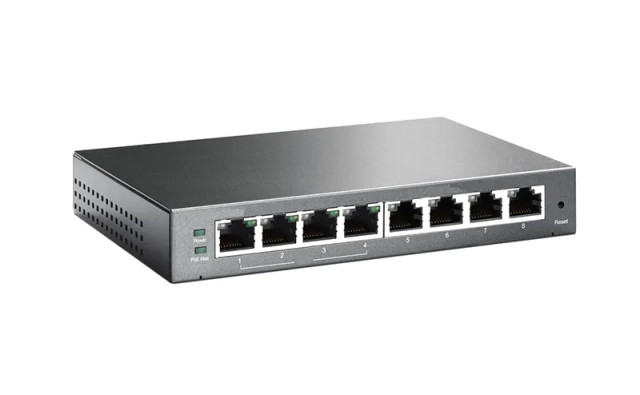In today’s digital world, businesses and enterprises rely heavily on efficient network systems to ensure seamless communication and data transfer. Whether it’s for corporate networks, data centers, or small business setups, a network smart switch plays a crucial role in enhancing overall network performance. As an intermediary between connected devices, these switches improve data transmission, ensure network stability, and offer security features to safeguard sensitive information.
Understanding Network Smart Switches
A network smart switch is a type of network switch that offers partial management features, making it a hybrid between unmanaged and fully managed switches. Unlike unmanaged switches that provide basic connectivity without configuration, smart switches offer a level of control that enhances performance without the complexity of fully managed solutions. These devices are ideal for small to medium-sized businesses (SMBs) and enterprises that require more than just plug-and-play connectivity.
Key Features of Network Smart Switches
- Optimized Network Performance
Smart switches allow businesses to prioritize traffic through Quality of Service (QoS) settings. This means critical applications like video conferencing, VoIP, and cloud computing get priority bandwidth, reducing lag and improving efficiency. - Enhanced Security Measures
Security is a top priority in IT hardware, and smart switches come with essential security features like VLAN segmentation, port security, and Access Control Lists (ACLs). These prevent unauthorized access and protect data from cyber threats. - Simplified Network Management
Unlike fully managed switches that require a dedicated IT team for configuration, smart switches offer an easy-to-use web interface, making it simpler to monitor and adjust network settings. - Energy Efficiency
Many modern computer hardware devices are built with energy-saving features, and smart switches are no exception. They include functions like Energy Efficient Ethernet (EEE), which reduces power consumption when network traffic is low. - Scalability and Flexibility
Smart switches support VLANs and Link Aggregation, allowing businesses to scale their networks efficiently without major overhauls. This makes them a great investment for growing enterprises.
Why Businesses Need a Network Smart Switch
1. Enhanced Network Performance for IT Hardware
In industries where IT hardware is the backbone of operations, a network smart switch ensures that connected devices, such as servers, workstations, and storage systems, function optimally. By managing data traffic efficiently, businesses can reduce bottlenecks and maintain a smooth workflow.
2. Cost-Effective Networking Solution
For businesses looking to improve network capabilities without investing in expensive computer hardware, smart switches provide an affordable alternative. They offer significant advantages over unmanaged switches without the high cost and complexity of fully managed systems.
3. Secure and Reliable Connectivity
With increasing cyber threats, businesses must prioritize security in their networking infrastructure. Smart switches provide secure networking features that protect sensitive data and minimize risks associated with unauthorized access.
4. Future-Proofing the Network
As businesses expand, their networking needs grow. Investing in a network smart switch ensures scalability and future readiness, allowing seamless integration of additional devices and cloud-based services.
How to Choose the Right Network Smart Switch
When selecting a network smart switch, consider the following factors:
- Number of Ports: Choose a switch that accommodates current and future device connectivity needs.
- Speed and Performance: Look for gigabit or multi-gigabit capabilities for faster data transmission.
- Security Features: Ensure the switch includes security protocols such as VLAN support and MAC address filtering.
- Management Interface: A user-friendly web interface or mobile app can simplify network monitoring and configuration.
- Brand Reliability: Opt for reputable brands known for quality networking solutions, such as Cisco, Netgear, or TP-Link.
Installation and Configuration Tips
Setting up a network smart switch is straightforward:
- Plan Your Network Layout – Identify the number of devices and their required bandwidth.
- Connect Devices to the Switch – Use Ethernet cables to link computers, servers, and access points.
- Access the Web Interface – Log in to the switch’s web interface using a browser.
- Enable VLAN and QoS Settings – Configure network segmentation and prioritize important traffic.
- Monitor Network Activity – Regularly check performance metrics to optimize usage.
Final Thoughts
A network smart switch is a vital component for businesses looking to enhance network efficiency, security, and scalability. Whether you’re in the IT hardware industry, managing computer hardware, or improving networking infrastructure, investing in a smart switch can provide long-term benefits. By choosing the right switch and configuring it properly, businesses can achieve a more secure, high-performing, and cost-effective network setup.












